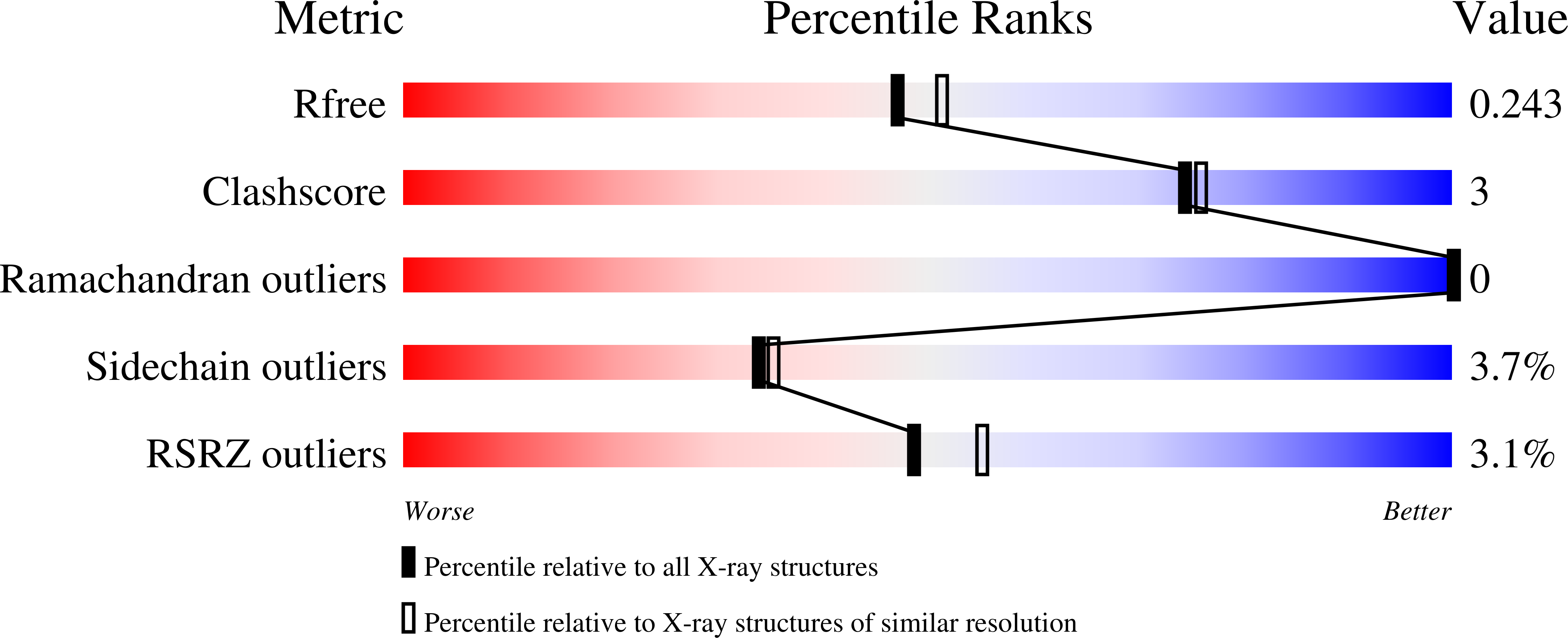Identification of highly selective SIK1/2 inhibitors that modulate innate immune activation and suppress intestinal inflammation.
Babbe, H., Sundberg, T.B., Tichenor, M., Seierstad, M., Bacani, G., Berstler, J., Chai, W., Chang, L., Chung, M., Coe, K., Collins, B., Finley, M., Guletsky, A., Lemke, C.T., Mak, P.A., Mathur, A., Mercado-Marin, E.V., Metkar, S., Raymond, D.D., Rives, M.L., Rizzolio, M., Shaffer, P.L., Smith, R., Smith, J., Steele, R., Steffens, H., Suarez, J., Tian, G., Majewski, N., Volak, L.P., Wei, J., Desai, P.T., Ong, L.L., Koudriakova, T., Goldberg, S.D., Hirst, G., Kaushik, V.K., Ort, T., Seth, N., Graham, D.B., Plevy, S., Venable, J.D., Xavier, R.J., Towne, J.E.(2024) Proc Natl Acad Sci U S A 121: e2307086120-e2307086120
- PubMed: 38147543
- DOI: https://doi.org/10.1073/pnas.2307086120
- Primary Citation of Related Structures:
8TXY - PubMed Abstract:
The salt-inducible kinases (SIK) 1-3 are key regulators of pro- versus anti-inflammatory cytokine responses during innate immune activation. The lack of highly SIK-family or SIK isoform-selective inhibitors suitable for repeat, oral dosing has limited the study of the optimal SIK isoform selectivity profile for suppressing inflammation in vivo. To overcome this challenge, we devised a structure-based design strategy for developing potent SIK inhibitors that are highly selective against other kinases by engaging two differentiating features of the SIK catalytic site. This effort resulted in SIK1/2-selective probes that inhibit key intracellular proximal signaling events including reducing phosphorylation of the SIK substrate cAMP response element binding protein (CREB) regulated transcription coactivator 3 (CRTC3) as detected with an internally generated phospho-Ser329-CRTC3-specific antibody. These inhibitors also suppress production of pro-inflammatory cytokines while inducing anti-inflammatory interleukin-10 in activated human and murine myeloid cells and in mice following a lipopolysaccharide challenge. Oral dosing of these compounds ameliorates disease in a murine colitis model. These findings define an approach to generate highly selective SIK1/2 inhibitors and establish that targeting these isoforms may be a useful strategy to suppress pathological inflammation.
Organizational Affiliation:
Janssen Research and Development, LLC., Spring House, PA 19477.




















